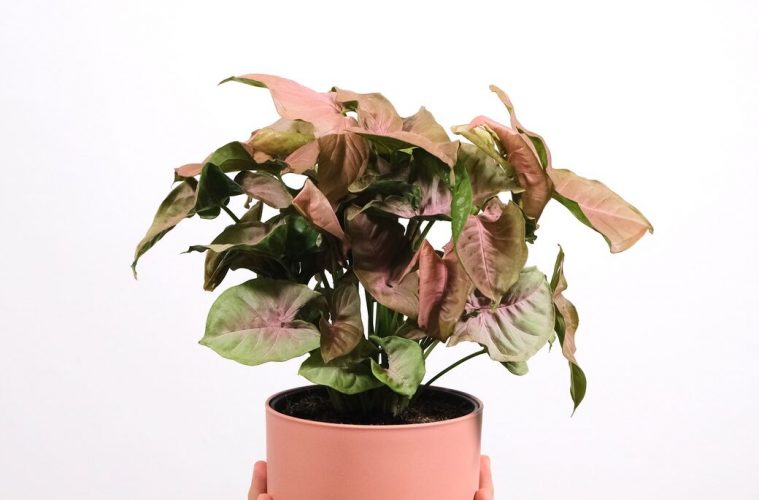Don’t feel guilty about adding an expensive plant to your indoor jungle.
New houseplant cultivars are constantly being developed to challenge what we know about famous species. They often have interesting variegation, unique leaves or weirdly shaped flowers.
Unfortunately, due to the difficulty of growing and propagating these specialised plants, they often come with a high price tag too.
There is no better way to treat yourself than by adding a fascinating houseplant to your collection few people around the country get to enjoy.
Plus, the satisfaction of growing and caring for these plants is much greater with the higher stakes involved.
If you have some extra cash and want to splurge guilt-free, these are the houseplants you should be looking for:
1. SYNGONIUM ‘STRAWBERRY ICE’
Syngonium is an interesting plant genus with arrow- or shield-shaped leaves growing on long vines. In South Africa, they are actually considered invasive due to their rapid spread and ability to smother other plants in the process.
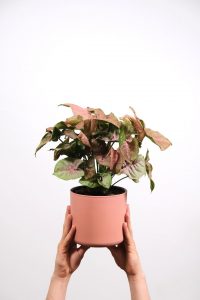
Image credit: Unsplash
However, when kept in a container indoors and away from any chance to spread outdoors, they become ideal houseplants. One of the rarer cultivars of this species is ‘Strawberry Ice’, aptly named after the variegated leaves featuring splotches of pink, cream and green on leaves with a burgundy tinge. The colouring and glossy sheen make ‘Strawberry Ice’ look almost unreal and incredibly eye-catching. Due to the rarity of this cultivar, one plant will cost you more than R1 000.
The satisfaction of caring for these plants is much greater with the higher stakes involved
2. ALOCASIA ‘NINJA’
If you prefer something a little more dramatic in your collection, this Alocasia cultivar is for you. Alocasia are slowly taking over the houseplant world, with their structural arrow-shaped leaves and arching stems. They are not known as the easiest plants to care for, but their stunning looks make them well worth the extra effort.
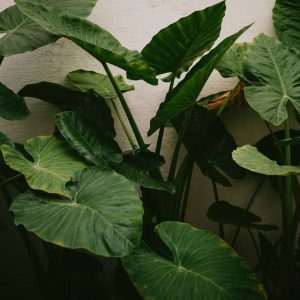
Image credit: Unsplash
Although there are many interesting types to choose from, including the recently introduced Alocasia zebrina and Alocasia ‘Stingray’ with striped stems, Alocasia ‘Ninja’ stands out from the crowd. This plant sports foliage in such a deep green that it appears almost black – a rare colour in itself. These leaves not only have an interesting colour but texture too, looking just like velvet fabric. To top it all off, the central veins are a stark white, providing wonderful contrast. Luckily it is less pricey than the previous cultivars too, costing just over R500 from available retailers.
The rare houseplant market is an expensive one
3. PHILODENDRON ‘WHITE WIZARD’
As one of the most widely grown genera indoors, it is no surprise that growers focus a lot of their attention on developing new Philodendron species and cultivars. Common species such as Philodendron hederaceum, the heartleaf philodendron, are easy to recognise and easy on the budget. But if you’re looking for something a little more unique, there is plenty to choose from.
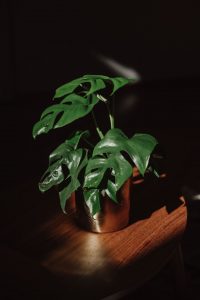
Image credit: Unsplash
One of the current favourites is ‘White Wizard’, a descendant of the species Philodendron erubescens. Much like the famous variegated Monstera, this plant features large patches of stark white variegation, often covering half of an entire leaf. Very rare, ‘White Wizard’ is also typically priced over R1 000 for one plant, although smaller plants or individual cuttings may be sold for less.
ALSO SEE:
4. PHILODENDRON BILLIETIAE
This Philodendron species is not as expensive as ‘White Wizard’ but comes with rare status and an interesting growth habit making them a great addition to any houseplant collection. At first glance, you’d be forgiven for thinking this isn’t a philodendron at all as it looks different from other types. Nicknamed ‘Billie’, Philodendron billietiae has large, long and narrow leaves in an elongated arrow shape.
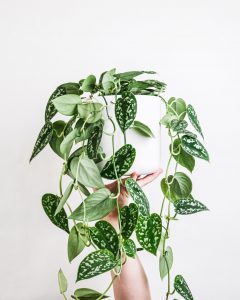
Image credit: Unsplash
The leaves also have a gentle ruffle to them and hang down from long and strong stems coming from the centre. This plant is easy to take care of, and has similar requirements and adaptability to the more common philodendron species. If you’re a new houseplant collector looking to step out of your comfort zone, this is the species you should reach for.
5. HOYA GIGAS
Hoya is another fascinating genus popular for growing indoors. The leaves are generally slightly thicker than other tropical houseplants, storing more water than usual and making them quite easy to care for in the right conditions. However, what makes hoyas truly stand out is their interesting flowers.
ALSO READ:
How to care for your houseplants when you have too many to manage
Very few houseplants bloom indoors due to different lighting and environmental conditions. But when it comes to hoyas, if your plant is mature enough and given great care, they flower reliably indoors to add bright pops of colour to your home. If flowers are what you’re after, Hoya gigas is the species you should be looking for. Rather than a large cluster of small flowers in a spherical shape as most hoyas have, this species features giant blooms almost the size of your palm. The flowers are a stunning deep purple, instantly drawing attention. This plant may need special care to produce these blooms, but it will be all the more satisfying to watch them flower.
6. NEPENTHES
For something completely unique, why not look to the world of carnivorous plants? Put simply, carnivorous plants are those that evolved to receive nutrients from insects rather than soil in nutrient-poor environments. These plants developed traps by modifying their leaves, each with interesting shapes and sticky substances designed to lure prey and keep them there. Nepenthes is a genus commonly known as pitcher plants after their pitcher-shaped traps.
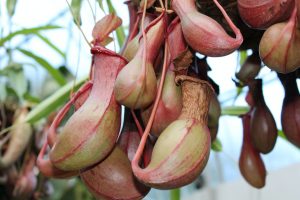
Image credit: Unsplash
Although some common species are relatively inexpensive, there are a few with dramatic traps that cost more. It seems the more unique or colourful the trap, the higher the price tag. Take Nepenthes sibuyanensis x merrilliana as an example, a pitcher plant with giant traps larger than the size of your hand. Or look for ‘Bloody Mary’, a Nepenthes with solid red pitchers bound to turn heads.
Most pitcher plants will already stand out in a houseplant collection, so the type you choose is up to you.
ALSO SEE:
Feature image: Unsplash
Written by Madison Moulton for April’s issue of Woman&Home.

